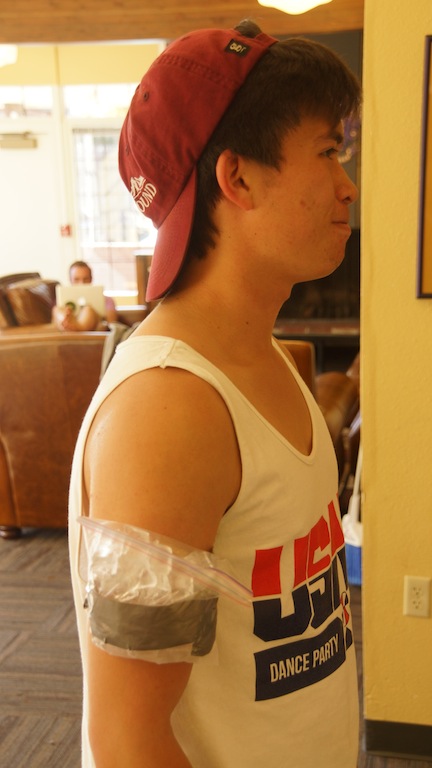The dream of the 90’s may be alive in Portland, but that doesn’t mean they have a monopoly on throwback fashion.
On the Puget Sound campus, our style of dress is still influenced by the most recent trends.
If a stranger were placed on our campus to observe the student body and their fashion practices, what would they notice?
It is my belief that they would recognize three distinct fashions worn by Puget Sound students, which I would categorize as the outdoorsperson, the athlete and the ever-popular ‘hipster’ style.
The outdoorsperson can be identified in a couple of ways.
First, that they aren’t outdoors.
Second, that their closets are close to bursting with flannels, Patagonia jackets, puffy vests and any form of footwear that is waterproof and offers good arch support (typically Birkenstocks).
Occasionally these people will go to Point Defiance and Instagram a picture of themselves communing with nature, but typically you can find them sitting in Oppenheimer drinking their fifth cup of coffee (from their own mug) or playing intramural frisbee on Todd field.
There is a sub category of people who are, in fact, genuine outdoorsmen and women, but they are usually off-campus.
The athlete can be seen in three forms. There is the ‘I’ve-just-worked-out’ look, the ‘I-worked-out-at-some-point-today’ look and the ‘I-should-be-working-out’ look.
People who have just worked out, who can be seen standing in the S.U.B. with their bro-tanks and running shorts on (sometimes with obvious signs of perspiration), appear haggard, yet to the begrudging observer, extremely fit.
There are the people who have worked out and obviously had no time or didn’t care to change from their workout clothes, and think that merely by slapping on a pair of sweats over their sweat drenched clothes they can create the illusion of having put real clothes on.
And lastly, there are the majority of people who feel bad for not having worked out in the past few hours/day/weeks/months and put their yoga pants on to make themselves feel sporty and to remind them to go to the gym later.
The hipster decides that what they want to wear is their business, as long as it is what their friends are wearing.
The hipster style borrows from many different eras of fashion, most of which hail from different counter-culture movements from the 20th century.
There are the hipster bohos decked out in maxi skirts, leather sandals and crochet tops who look like they just got back from Woodstock.
Hipster punks, who spend more time down in the KUPS studio than in class, who decided to embrace the denim on denim fad that has revived itself over the past years.
Oddly-shaped sunglasses, high-wasted pants, giant sweaters, artistic print tees and corduroys are the staples of a hipster closet.
Footwear is a category in and of itself, with many people sporting boots (but not new boots), Converse (but not new Converse), and more Birkenstocks (but not the Birkenstock brand).
It’s ideal for your clothes to look like they’re used, because owning new clothes means that you have money, something that hipsters don’t have or don’t want to look like they have.
By nature, someone who is truly hip should stand out from the crowd.
That means it would be very difficult to place their sense of style in a group with any others. As soon as one’s fashion choices can be applied to an entire group, however, it loses its individuality.
If a group can be categorized as ‘dressing like hipsters,’ they have already failed the hipster ethos, and have lost the battle against conformity they are trying to fight because they can be categorized as a collective.
I don’t think it would be difficult for our alien friend to pick out the ‘hipsters’ at our school.
Senior Frank Walter asserts that fashion, as a social construct, is inherently a means of standing out from one group by fitting into another.
“If you are buying clothes you are making decisions not because you think ‘oh I think that looks cool’ but ‘it’s cool and it will make me look cool’. Since fashion is a social construct, ‘good’ is also a social construction. You can go against with what people think, but those people are going to have an influence on you because they are society, and society determines what looks good and what is the counter culture,” Walter said.
This distinction will help you find people with similar tastes as your own, and actually create a bond between people rather than set one apart.
Regardless of where your allegiances lie, other people are determining your fashion choices.
In the end, figuring out your place in the world and figuring out your own personal values and desires depend on fashion, and that will always rely on other people.


